Butters

COCOA BUTTER
Cocoa butter is obtained by crushing the oily powdery seeds of Theobroma Cacao L.
A popular ingredient in body care products and face creams. It works as an excellent emollient because it softens dry skin, and it is especially recommended in the prevention of stretch marks, increasing the elasticity of the skin. Isolated from the plant Theobroma cacao L., the seeds of the real cacao tree contain about 40-50% fatty oil, a mixture of oleic, palmitic and stearic glycerides (50-70%), oleic and stearic (22%) and oleic and palmitic (5%) .
The ability of excellent skin hydration is the reason why butter is very often recommended to patients, especially pregnant women, in the treatment of dry and xerotic skin, treatment of chapped skin and lips, burns and scars, and in the prevention of skin irritation and itching. It is excellent for skin care after exposure to the sun and for the prevention of premature aging of the skin, especially in case of photoaging of the skin. As it is a 100% natural raw material that is a natural preservative at the same time, as well as because of its extremely pleasant natural aroma, it is particularly popular among patients!

SHEA BUTTER (SHEA)
It is an African tradition that only women are allowed to touch the shea tree, pick the fruits and process them. Shea butter is also called "women's gold" because it enables hundreds of thousands of African women to earn income by processing shea fruits into butter and in this way acquire clothes, medicine and provide education for their children. For this reason, the cutting of trees is strictly prohibited. Shea or shea tree grows naturally in tropical Africa. The shea tree is 12-20 meters tall, and its habitat is the dry area around the Sahara. It has never been cultivated - the main reason is that it takes about 15 years to produce its first fruits, and it reaches its full maturity only in 25-50 years. The nuts of the shea tree are very tasty, and the harvest is always so rich that there is food for everyone, and even some left over for animals and birds. The fruits are harvested when they are ripe, between July and August, in the middle of the rainy season. An African proverb says that every tree that grows in the savanna bears divine fruit, and when it comes to the shea tree, which translates from the Bamanankan language as 'sacred', there really is no doubt about that. Shea butter has been used in Africa for its healing properties for more than 2,000 years - as a remedy for rheumatic pains, muscle inflammation, as a "shield" from the dry desert wind, and for baby skin care. Some tribes even believe that skin smeared with shea butter cannot be pierced by a bullet. Properties and action Due to its composition, Shea butter is irreplaceable in daily skin care. It contains large amounts of unsaturated fatty acids (between 7 and 12%), vitamins A and E, and a high content of proteins and minerals. It is particularly effective in the regeneration of skin cells and for the care of aged and wrinkled skin (antiaging effect). It has an anti-inflammatory effect, so it helps with various skin diseases such as psoriasis, seborrhea, eczema, neurodermatitis and acne. It also helps in healing minor wounds, scratches and burns. Shea butter penetrates deep into the skin, regenerates it, so it can also be used in the treatment of stretch marks and scars. It is especially good for preventing stretch marks during pregnancy. It stands out because it is one of the few natural substances that protects against UV radiation (thanks to the cinnamic acid that gives it its characteristic smell). Only unrefined shea butter has UV filters. As protection from the sun, it is applied to the whole body before sunbathing, but also to the hair, so at the same time it protects against drying caused by the sun and salt. After sunbathing, it can be used as regular skin care - it will help heal sun-damaged skin, and the skin will be nourished and silky soft. Shea butter helps capillary circulation, which increases the supply of oxygen to the tissue and improves the elimination of metabolic waste products, i.e. toxins. It is also safe for sensitive skin, so it can also be used as an anti-wrinkle cream for the eye area. The skin tolerates it well and does not cause any allergic reactions. For the same reason, shea butter is an excellent choice for caring for sensitive children's skin. African women have been using it for centuries in the daily care of newborns, but also for skin problems such as diaper rash and scalp. It can be used as a hair pack, and for very dry, brittle, colored hair, a small amount can be applied after washing, without rinsing. Due to its anti-inflammatory effect, it is also used after shaving or depilation. Small cuts will heal faster, irritation will be prevented, and the skin will be deeply nourished. It is also popular to use shea butter when making lip balm because it protects against wind and cold, and makes lips soft.
PLANTS

CHAMOMILE FLOWER
Anti-inflammatory, spasmolytic and carminative action in skin care products, as well as food supplements.

LAVENDER FLOWER
Decorative and abrasive, exfoliating action in soap with lavender oil. Dry lavender flower from our farms.
FUNCTIONAL OILS

ALMOND OIL
Almond oil (cold pressed) is obtained from 100% pure almond seeds. This high-quality oil is an excellent emollient for softening and regenerating the skin and scalp.
It has traditionally been used for various types of eczema, psoriasis, and dry and inflamed itchy elephant skin, and for years it has been used in the prevention and treatment of stretch marks. It is rich in essential fatty acids and vitamins A, B1, B2, B6 and E. Cold-pressed almond oil has a light texture that is easily absorbed by the skin, therefore it is particularly desirable as a carrier (vegetable oil) in aromatherapy, in massages or in various baths. . It is used in creams, lotions, moisturizing soaps, balms, care oils, etc.

HAZELNUT OIL
It is obtained by cold pressing of hazelnuts. It is a very light and fast-absorbing oil, with a slight astringent effect, which is why it is used for problematic skin with enlarged pores, although it is ideal for all skin types. It is rich in vitamins and essential fatty acids, which help soothe inflammatory changes in dry and irritated skin. It is suitable for addition to formulations intended for oily and problematic skin. It is often used in tanning preparations, and due to its quick absorption, it is extremely desirable in aromatherapy as a carrier of essential oils. Due to its properties, it is used in massage preparations, creams and lotions, soaps, and in hair care.
HAZELNUT oil, along with macadamia and avocado oils, belongs to fast-absorbing oils. It has a sweet, nutty smell (some varieties of hazelnut produce an oil with a completely neutral smell!) and a fine texture, quite stable due to the content of vitamin E. Due to the content of triterpene compounds, it is suitable for oily, poorly blood-supplied skin prone to acne, as well as for sensitive skin prone to redness and which lacks moisture. Due to the unique composition of phytosterols, it regulates fat secretion, softens and moisturizes the skin. It is an essential ingredient in preparations for the treatment of varicose veins, ruptured capillaries and cellulite.

MACERAT OF LADY'S GRASS
St. John's wort or St. John's wort is the most famous natural remedy against depression. The macerate obtained from flowers picked at the peak of maturity has a characteristic red color. St John's wort has been used orally for hundreds of years to treat depression, depression, anxiety, as well as nerve pain. St. John's wort poultices or St. John's wort oil are used externally for wounds, burns, sunburns, insect bites, etc.

marigold oil (macerate)
"The golden oil of the calendula flower is obtained by maceration in olive oil, which extracts valuable medicinal ingredients from this ordinary but magical plant that we often see in our gardens. The oil is extremely rich in flavonoids, carotenoids, saponins and other medicinal compounds that are easy to apply in this way on the skin, the skin absorbs it faster and the beneficial effects are quickly visible when restoring damaged skin or protecting healthy skin.
It is extremely good for calming inflammation in inflamed or enlarged veins, against hemorrhoids and varicose veins, against acne and skin redness, helps faster healing of wounds, soothes the skin after insect bites, is good against burns as well as in many other cases. The versatility of this ancient oil is being rediscovered more and more and calendula is taking its rightful place."

SMITH OIL (MACERAT)
Smilje has been valued since the time of Homer and the ancient Greeks for its magnificent healing properties. It is traditionally used for its anti-inflammatory and cell regeneration properties, pain relief, calming and uplifting of the overall state of the organism. It is even believed to stimulate the liver. It can be applied to the skin to remove scars, stretch marks, surgical scars and wounds of all types. In skin care preparations, this is one of the most expensive ingredients due to its skin rejuvenating properties and soothing effect on sensitive and inflamed skin. It works against wrinkles and revitalizes and regenerates tired and mature skin exposed to external and internal stress. Oil for eternal beauty and youthful appearance.

AVOCADO OIL
AVOCADO oil is dark green in color, has a mild smell, and is quickly absorbed. It is rich in essential fatty acids, lecithin, vitamin E and beta-carotene. It is intended for the care of all types of skin, especially dry, dehydrated, poorly blood-stained and mature skin, but also skin prone to inflammatory processes. We also use it to treat scars, stretch marks and general skin regeneration, and it is an indispensable ingredient in hair packs.
Due to its lecithin content, it is excellent for making creams and emulsions.
Avocado is a very pleasant oil that easily penetrates the skin and makes it soft. It has a pleasant greenish color, and is often cloudy. It can have an intense avocado smell or a relatively light and pleasant smell, depending on the manufacturer. Like almonds and apricots, avocado cares for all skin types, but it is mainly used for the care of mixed skin.
VARIOUS

SODIUM ALKALINE
Sodium hydroxide is a white opaque hygroscopic crystalline solid, which turns gray in the presence of small amounts of impurities. It is hygroscopic (attracts/easily absorbs moisture and carbon dioxide CO2 from the air), resulting in sodium carbonate and sodium hydrogencarbonate. Previously, lysine was obtained by filtering soft wood ash. This method was used to obtain potassium lye, which is used to make soft liquid soaps. Sodium lye can often be purchased in the form of pellets or small grains of pharmaceutical grade. Luzina transforms oils into soap through the saponification process, which usually lasts from 3 to 4 weeks in natural handmade soaps. That soap is hard and has no expiration date.

ACTIVE CARBON
Activated carbon has a large adsorptive surface and is usually used for a short period of time, but it is not recommended to take it for a long time because it adheres to the mucous membrane of the digestive system and binds water. When used for a short period of time, it is completely safe and harmless, and can be used even by children. Powerful skin cleaner and detoxifier - removes fat and all impurities from the surface. A mild preparation for cleansing the face that helps to deeply clean clogged pores, balance the production of sebum.

GREEN CLAY
Green clay is a natural substance that contains many mineral salts and trace elements. Clay contains silicon, aluminum, potassium, calcium, sodium, magnesium, silver, iron, lead and copper. It is produced in granules or fine powder, and depending on the composition and color, it can be green, red, yellow, blue and white. In our stores, although rare, you can find green clay and it also has the widest spectrum of action.
Clay works internally and externally.
Clay absorbs, drains and then eliminates impurities from tissue, blood and lymph. It cleans the body so much that the unpleasant smell of sweat disappears. It strengthens the body's defense mechanism and fights against diseases that have arisen as a result of weak immunity.

HONEY
Ripe honey does not contain more than 15% water, and the bees cover it in the comb with wax covers and thus protect it from moisture absorption and spoilage. Honey contains minerals, amino acids, highly valuable organic acids such as formic, malic, citric, acetic, succinic acid, pigments, various chlorophyll derivatives, wax, inulin and elements of the vitamin B complex.
All previous attempts to interfere with the industrial production of honey, despite the powerful technology and the enormous resources invested, have produced devastating results.
Bees carry the secret of producing real natural bee honey in their body and digestive organs, which turn this product into a medicine that is almost irreplaceable in human nutrition and treatment.

BEE'S WAX
Beeswax is one of the first waxes used in natural cosmetics. Like all waxes, it protects the skin from drying out, and the first creams (pseudoemulsions) were made with beeswax as far back as ancient Greece. It melts at a temperature between 61-66 °C. It has a wide range of applications: balms for lips, skin and body, emulsion stabilizer (coemulsifier), soaps, making candles. There are two commercial varieties - yellow (unrefined) wax, which contains dissolved substances from other bee products and most often has a smell reminiscent of honey, and white (refined) wax, which is obtained from yellow wax by purifying it through substances that bind smells and colors. White wax has no smell and is used when there is a risk of an allergic reaction or when you want to avoid the smell of wax in cosmetics.

GOAT MILK
The ancient Greeks used goat's milk to treat pneumonia, tuberculosis, rheumatic, respiratory and other diseases. According to one legend, the supreme god from Greek mythology - Zeus was raised by the nymph Melissa by feeding him precisely goat's milk. The ancient Greeks treated themselves with goat's milk, while the ancient Egyptians recognized its potential to preserve beauty, so Cleopatra herself supposedly bathed in goat's milk and can thank it for her beauty. It stimulates the synthesis of structural elements of the skin, improves the structure of the skin and smoothes out wrinkles, increases the elasticity of the skin, protects the skin from the harmful effects of free radicals, prolongs the aging of the skin, nourishes and perfectly moisturizes the skin.

FLAX SEEDS
A linen pillow is attributed with beneficial effects on health - like linen wraps and linen pillows are a traditional medicine in the folk medicine of many nations. Flaxseed oil warms and keeps warm or cools and keeps cold eye or neck compresses.
BASE OILS

COCONUT OIL
Oil with a characteristic coconut scent. Coconut is butter, but it melts at a lower temperature than cocoa butter, so it is usually a white solid (butter) in winter, and oil in summer. It absorbs extremely quickly. The composition is dominated by the so-called short-chain, saturated fatty acids such as lauric acid (40-50%). Cold-pressed butter has a pleasant coconut scent. It is used in butters and oils for the skin, creams and other emulsion systems, balms for skin and lip care, and in hair packs. Coconut is a relatively inexpensive butter with wide applications. It gives lightness to creams and smoothness to the skin. Like cocoa butter, it protects the skin from drying out, but does not create a film on the skin. It is also ideal for making macerate. It gives hardness and rich lather in soaps, depending on the percentage added to the recipe. It is light and easily absorbed. It nourishes the deeper layers of the skin and maintains moisture for a long time.

SOY OIL
Cold-pressed soybean oil has a very good nutritional value thanks to the high content of linoleic acid, lecithin, phytosterols, tocopherols and fat-soluble vitamins. The high content of lecithin from cold-pressed soybean oil protects the cardiovascular system and has a strong effect on the regeneration of brain cells. Unsaturated fatty acids from soybean oil help the body absorb nutrients from food. In cosmetics, it has antioxidant properties, cleans and softens the skin. It gives softness to soaps and combines well with olive, coconut and palm oil.

PORK FAT
According to its composition, lard is 40% saturated fat, while, for example, coconut oil is 85% saturated fat. Most of the monounsaturated fat in lard is oleic acid, a healthy fatty acid that benefits the heart and is associated with lower levels of bad cholesterol.
There is twice as much oleic acid in lard as in butter.
Lard has a high boiling point. More precisely, its structure does not change when heated above 250 degrees Celsius.
Therefore, foods fried in lard absorb less harmful radicals, which in the case of other soluble foods, such as butter, are increased by frying.
Fats from fats have all the advantages and it has been proven that the body needs them to perform daily functions, but in a smaller amount than was used in the past.
We only use lard in our Grandma's soap. It perfectly washes all possible stains and is fantastic for washing hair because it has a beneficial effect on the scalp. In the past, many soaps and cosmetics were made from pork fat in the hall and in the city. The trend is slowly returning.
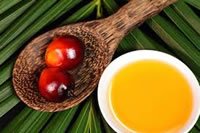
PALM OIL
Palm oil belongs to the category of vegetable fats/oils, and in its raw state it is dark yellow to yellowish red, characteristically unpleasant, sweetish in taste and smelling like violets. The oil is obtained by pressing and boiling the fleshy part of Elaeis guineensis palm fruits (which is native to Nigeria and the west coast of Africa, and is grown on plantations in Sumatra), and Elaeis melanococca (which is native to America), exclusively in the countries where these plants grow . It is very common in the production of quality soaps due to its saponification properties, hardness and texture it gives to the soap.

OLIVE OIL
Olive oil is rich in vitamin E (natural tocopherols) and other natural antioxidants, which is why it has a regenerative effect on tissues and the ability of the skin to regulate the natural moisturizing system. Oleic fatty acid softens and nourishes the skin and has a good effect on its stimulation - it tightens and strengthens it. Sterols have a healing effect, promote skin healing, and olive oil is ideal for people who have problems with dry and flaky skin. Extra virgin olive oil is an active ingredient in all our soaps and creams.
ESSENTIAL OILS
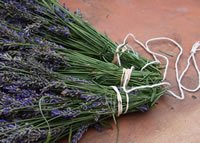
LAVENDER OIL (LAVANDIN)
Lavender oil (Lavandula x intermedia Reverchon) from Croatian organic farms. Lavender essential oil has a light floral aroma, similar to alpine lavender - only sharper and transparent in color. It's a great oil that helps you feel relaxed, relaxes tired muscles and joints, relieves muscle stiffness, clears mucus from the lungs and sinuses, and helps treat wounds and dermatitis. Produced by steam distillation of fresh lavender flowers. It is one oil that must be included in massage blends and despite not being as well known as French lavender, it is a valuable ingredient in any massage.

ROSEMARY OIL
Rosemary oil from the coast of Croatia has various positive health effects, including the ability to stimulate hair growth, increase mental activity, strengthen memory, ease breathing problems and reduce pain. On the skin, it helps relieve congested fields, treat acne and swelling, and can be used for dermatitis and eczema, and a very popular use of this oil is in hair care. Due to its pronounced positive effect on hair growth and density, as well as scalp health and stimulation of circulation in the scalp, it is effective in stimulating its renewal and regrowth. The scalp can be massaged with a combination of rosemary and tea tree oil to strengthen it and remove dandruff.

TEA TREE OIL
The tea tree is an evergreen bushy plant, native to Australia, now widely cultivated on plantations. It has elongated undivided leaves that look more like needles, with visible glands along the leaves that contain essential oil. The flowers are small and white. The plant is endemic to the subtropical coastal region of eastern Australia.
Indications: antiviral, antibacterial and antifungal properties of tea tree oil refer to a large number of viruses, bacteria and fungi. Randomized clinical studies have proven the effectiveness of tea tree in mild to moderate acne. Evidence from folk medicine is also numerous. Today, there are a number of cosmetic products containing tea tree oil. In phytoaromatherapeutic treatments, tea tree essential oil is used for all forms of respiratory infections, infectious bowel inflammation, urogenital infections, skin infections, acne, immunodepression and general fatigue, and as a preventive measure against skin damage during radiation therapy.

CINNAMON OIL (CEYLON)
Cinnamon leaf essential oil (C. zeylanicum Nees), unlike cinnamon bark, is less irritating because it contains only small amounts of cinnamaldehyde (up to 2%). Due to the content of phenol (eugenol), as well as the oil obtained from the bark, it acts against pathogenic bacteria, fungi and viruses. It acts as an immunostimulator by increasing the production of immunoglobulin A, which protects the mucous membranes in the body (including the respiratory and digestive mucosa).
Due to the eugenol used in dentistry, it is used for infections of the oral cavity and other viral and bacterial infections. Contains up to 85% phenol eugenol, aromatic alcohol cinnamol up to 7%, β-caryophyllene and esters such as benzyl benzoate.

SAGE OIL
Medicinal sage (Salvia officinalis L., Lamiaceae) has been known since ancient times. Even today, it is officially used in the treatment of throat and mouth infections. The essential oil has a lipolytic, expectorant effect. It works well as an antibacterial against Gram-positive organisms, but poorly against Gram-negative organisms. It also works well against fungi (Candida). It is a strong estrogen mimetic, so it is most often used in the regulation of female hormones in menopausal complaints and amenorrhea, dysmenorrhea and polycystic ovaries.
Essential oil is used sparingly in the cosmetics industry. Due to its lipolytic properties, it is used in preparations against cellulite and obesity. In addition, it is also used for problems with excessive sweating.
Contains up to 8% of sesquiterpenes (caryophyllene), monoterpene alcohols (up to 12% linalool, up to 10% α-terpineol, up to 15% borneol), sesquiterpene alcohol viridiflorol, up to 14% oxide of 1,8-cineole. The content of monoterpene ketones is the highest (up to 40% α-thujone, up to 15% β-thujone, up to 26% camphor).

MINT OIL
Essential oil of peppermint (Mentha x piperita L., Lamiaceae) is widely applicable in aromatherapy due to the whole range of medicinal properties. It is obtained from the entire aerial part of the plant, and depending on which variety it is obtained from (there are many), it differs in terms of menthol and menthone content.
The essential oil has an antibacterial and antiviral effect. Stimulates the nervous system, raises blood pressure, acts as a stomachic. It stimulates the metabolism of liver cells and helps the regeneration of the liver. Locally, it acts as an analgesic, so it is used for migraines and headaches, rheumatoid arthritis and osteoarthritis.
The essential oil contains 1-5% limonene, 3.5-14% 1,8 cineole, 14-32% menthone, 1-9% menthofuran, 1.5-10% isomenthone, 2.8-10% menthyl acetate, 30-55% menthol and a maximum 4% pulegone and 1% carvone. Some cultivars produce oils extremely rich in menthol. The high menthol content does not enhance the effect and is suitable mainly for the food and cosmetic industries. The oil also contains esters (menthyl acetate) and traces of sulfur compounds (mint sulphide).

LAUREL OIL
The essential oil of laurel (Laurus nobilis L., Lauraceae) was known as a repellent. It is moderately active against bacteria, but very active against fungi, especially Candida species. It is a strong antispasmodic, analgesic and expectorant, so it is used for muscle pain and spasms, rheumatoid arthritis, canker sores. In cosmetics, it is used in preparations for oily skin and acne. Inhalations are used for viral infections of the respiratory system.
The essential oil of this Mediterranean plant is obtained by steam distillation of the leaves, and after distillation it must be aged for some time (about a year). The oil is rich in monoterpenols (up to 15% linalool, up to 5% α-terpineol), oxides (up to 45% 1,8-cineole), and a small amount of highly active sesquiterpene lactones (up to 2% costunolides, artemorin).
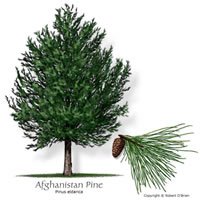
PINE OIL
The essential oil of pine needles (Pinus sylvestris L., Pinaceae) has long been used for rheumatic complaints, respiratory problems (with cough) and various inflammatory diseases. Extremely rich in monoterpenes (over 70%), this oil, according to the French school of aromatherapy, well stimulates the work of the adrenal gland (cortisol-like action), so it is ideal for various chronic inflammatory diseases (asthma, allergies, rheumatoid arthritis), and after the use of corticosteroid drugs such as the physiological function of the adrenal gland would be stimulated. For this purpose, it is usually combined with black juniper oil, in concentrations of 5-10%, which is applied to the kidney area twice a day. For respiratory problems, it is combined with some oil rich in cineole (Ravensara, Eucalyptus globulus), and used in inhalations or in oil mixtures for local rubbing in the lung area.
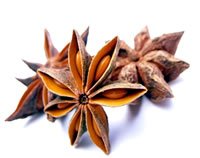
ANISE OIL
Essential oil with a strong and characteristic smell of anise fruit is obtained from anise seeds. Like aniseed tea, it works well for flatulence (flatulence), along with clary sage and clary sage it is useful for amenorrhea, polycystic ovaries and painful periods. Along with oils rich in cineole (ravensara, eucalyptus globulus) it is used for respiratory problems. It is also excellent as a breath freshener in mouthwashes, often combined with peppermint and lemon. In cosmetics, it is used as an addition to interesting and refreshing scrubs for the face and body, shower gels, but also in perfumes.
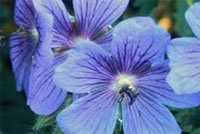
GERANIA OIL (BOURBON)
arphemically the most valued of all geranium oils. It regulates the production of sebum, so it is useful for treating both dry and oily skin. We use it for acne, dilated capillaries, small wounds and bleeding, inflamed veins, burns, thick and oily skin, seborrheic dermatitis, wetting eczema, lichen, for skin care with wrinkles. It has a strong antifungal effect.
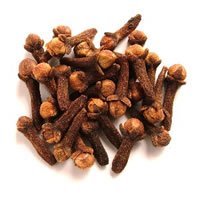
Clove Oil
The traditional use of cloves (unfortunately forgotten nowadays) is for all types of inflammation and infections of the oral cavity. First of all, clove has an analgesic effect, and at the same time it has a very strong antibacterial effect. At the first sign of a toothache, apply one drop to the tooth and the surrounding gums - it relieves the pain almost instantly, and can prevent granuloma. French dentists know how to put clove oil in a sick tooth (instead of traditional medicine).
In chronic fatigue syndrome, cloves are used in oral therapy, along with ravensara and mandarin.

OIL OF CITRONELLA
Cimbopongon Nardus, probably the most famous repellent, and a great solution if you want to protect yourself from insects in a natural way. It has a refreshing, activating effect (used against fatigue, headache, migraine); has antiseptic, fungicidal and insecticidal effects; regulates excessive sweating (deodorant); for oily skin care.
